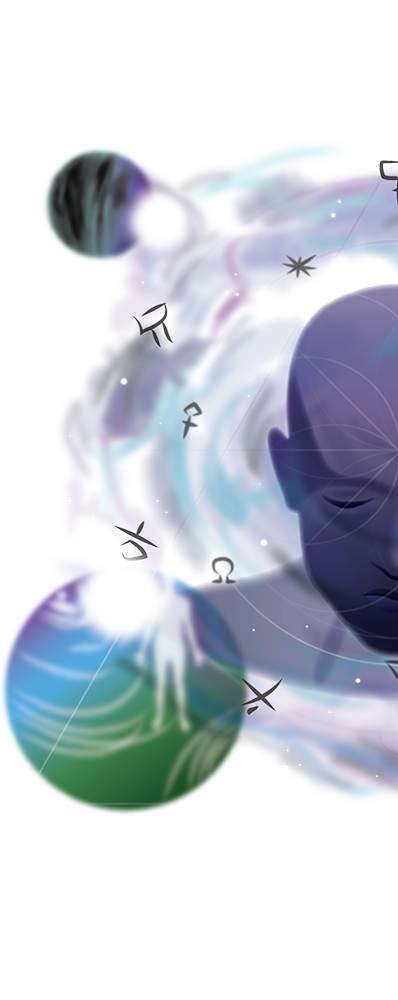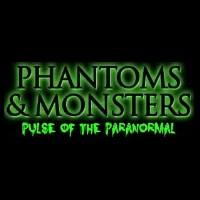By Rosemary Ellen Guiley
In August 2016, Greenville, South Carolina erupted in a wave of phantom clown sightings and encounters. Children reported evil clowns who frightened them and attempted to lure them into the woods. The wave spread to nearby states, North Carolina, Georgia, and Alabama. As news flashed around the internet and media, phantom clown sightings were reported across the entire country in more than two dozen states, and even elsewhere around the world.

Original art by Chris Forthofer
Sinister clowns suddenly were everywhere, banging on doors, shooting guns, leering, rattling chains, peering in windows like peeping Toms, and driving around in vans and pickup trucks. Children were terrified and parents were alarmed. Police were on alert.
Some of the cases were soon proved to be not supernatural, but people perpetrating hoaxes. Scatterings of arrests were made.
When the wave of clown encounters died down, more than 100 reports had been made from one end of America to the other. The wave left behind unanswered questions. What started it, and why?
There are no good answers—which may be part of the joke played by scary phantom clowns, a real and unexplained phenomenon that has stalked human beings through the ages. Phantom and killer clowns are not isolated, but are part of a sprawling web of the Unexplained that spreads out in many ways.
Prior to the 1970s, most people in the West—at least in the suburbs and rural areas—felt relatively safe in their communities. They did not worry much about their children being kidnapped, terrorists wreaking havoc, or uncontrollable and fatal epidemics (such as AIDS) laying waste. They did not worry about gang violence, drug trafficking, and rioting.
As those horrors crept into all layers of society, people felt increasingly unsafe and on edge. “Stranger Danger” emerged as a collective fear. It is no surprise that waves of phantom and killer clown activity followed in the wake.
Fear of clowns
Human beings hold a deeply embedded fear of clowns, called coulrophobia. Fear of clowns usually affects children and can be carried into adulthood. An informal poll of 1,999 Americans taken by Vox.com and Morning Consult in October 2016 showed that 42 percent of American adults are afraid of clowns to some degree.
Children are expected to laugh at clowns and be entertained by them, but even the zaniest clown can make children cry instead of laugh—and not by deliberate intent. Clowns are deformed—they have exaggerated body parts and grotesquely painted faces. They are not quite human. Their appearance evokes a response called the “uncanny valley,” a term coined in the 1970s to describe the unsettled feelings and revulsion toward robots that look nearly, but not quite, human. They are uncanny, causing reactions of uncertainty and even fear. So it is with clowns—they are not quite human.
Coulrophobia lurks below the surface in many adults, judging from the collective fright/fascination reactions to evil clowns such as Pennywise the Dancing Clown in Stephen King’s horror novel, It (1986), and other horror books and films. King’s plot revolves around a monster or being of unknown origins that periodically preys upon people, especially children, slaying them, and taking various forms to induce the greatest fear in its victims. It shape-shifts to a mummy, werewolf, vampire, witch, leper, and more, but It evokes the most dread as the killer clown Pennywise.
Deep down inside, we know there is nothing funny about clowns. Their grotesque and exaggerated appearances, especially faces, are only masks covering something dark, dangerous, and evil.
Phantom clown scares
The first major phantom clown scare struck America in 1981. In the Boston area, police were flooded with reports of clowns trying to lure young children into vans with candy. Some descriptions said the clowns were naked from the waist down—which sounded like pedophiles on the loose. Strangely, no adults ever saw these clowns—only children, most of whom were ages five to seven. Police stopped vans with clowns in them—yes, there were some out on the road—only to find professional clowns en route to and from entertainment and party gigs. The pestering, sinister clowns remained elusive.
The clown scare spread across the country. In Ohio, a knife-wielding clown chased people. In Kansas City, Missouri, school children reported a frightening, sword-wielding clown in a yellow van. The descriptions were all the same: a man with a white wig, black face paint, bulbous red nose, a black shirt with a devil on it, black pants decorated with candy canes down the sides, and big red shoes.
Similar reports cropped up in Omaha, Denver, and Pittsburgh. In Pittsburgh, the clown mutated to a man in a pink rabbit suit, driving a van. Police once gave chase, and the giant rabbit leaped out of the van, hopped away, and disappeared into a bar—vanishing completely.
Meanwhile, another mutation of the clown scare occurred in Mineral Point, Wisconsin, where thrill-seeking teenagers said they were stalked by a “vampire” in a cemetery. The vampire, seen by police, was a large man with a white face, wearing a cape. He escaped by jumping effortlessly over a six-foot barbed wire fence—a seemingly supernormal feat, and one embodied by other mystery figures, as we shall see below. A caped male reappeared in 2004, reportedly jumping out of trees at people.
The phantom clown scare of 1981 ended as it had begun—suddenly and without explanation, as though some fantastic Trickster had played rude jokes on a huge number of people.
Other phantom clown scares erupted after periods of dormancy. Some of them involved mystery clowns, and some were a mix of mystery figures and real people imitating the mystery, as happened in the 2016 scare. America was not alone; England, France, Canada, and other countries reported waves as well. In Central America, one scare featured clowns supposedly abducting children to harvest their organs.
Benjamin Radford, author of Bad Clowns (2016), observes that most clown waves start with children and spread to adults. The waves also are related to urban legends about kidnappers, murderers, and danger.
Loren Coleman, a leading cryptozoologist and frequent contributor to Fate, studied the 1981 scare, sending out 400 letters asking for accounts. Soon the responses were overwhelming. In his “Phantom Clown Theory,” he attributed mass hysteria stemming from children’s reports as a cause of the waves.
Once sightings are reported in the media, mass hysteria can take over, and spawn more sightings as well as hoaxes. These factors are present in many of the waves of various sinister figures documented through the years.
Are clown scares only cases of hysteria? That is a likely factor—but there is much more below the surface.
That old nemesis Trickster
Phantom clown scares are one of the latest wrinkles in an old phenomenon: the Trickster. The many variations of bad clowns embody traits of the Trickster, an archetypal figure in folklore, myth, and real life who upsets order and creates chaos—and laughs while doing it. The Trickster defies reason and logic. Tricksters are not entirely bad—in mythology they often impart gifts to humanity—but they are unpredictable, unreliable, and untrustworthy.
Since ancient times, the bad clown has played Trickster roles in society. The bad clown is first cousin to the Devil and to Death. It is linked to the Fool, who lures people with its seemingly harmless and stupid behavior, only to upend them, or even turn on them in some savage way. Court jesters, harlequins, mimes, and pied pipers are all versions of the bad clown.
One of the most notorious bad clown characters, which enjoyed tremendous popularity in Victorian times, was Mr. Punch, of the famous Punch and Judy puppet shows. Mr. Punch was a sadistic, misogynist, foul-mouthed personality who delighted audiences, perhaps because he acted out aggressions that real people could not.
Many villains of the stage, book, and film have bad clown-Trickster characteristics. Since the late 1700s, the vampire has been one of the most feared villains, existing simultaneously in real life and in fiction. Portrayals of the vampire are clownish: a garish face with fangs, cape, exaggerated attire and features, and a predatory nature. Bram Stoker’s character Dracula embodies the two-faced evil clown: sophisticated, ordinary gentleman by day, twisted and ravening beast by night. The most clownish cinema vampire is Lon Chaney in the silent film London After Midnight (1927). Chaney used fish hooks to pull his lips back into a garish, clownish grin to reveal a mouth full of saw teeth.
Researchers such as Coleman and the late John A. Keel, another Fate contributor and investigator of the Unexplained, have seen waves of mysterious predator figures as the shape-shifting Trickster itself. I agree as well. Whatever comprises Trickster delights in upsetting and terrifying people. As soon as a manifestation becomes old hat, it goes into dormancy and then re-emerges in a new way, or morphs into something else. We can trace links and a common lineage among all the threatening humanoid figures reported in supernatural lore.
In Mysterious America (1983, 2001), Coleman observed about the phantom clown scare of 1981, “The denizens of the netherworld have apparently dreamed up a new nightmare to shock us. … The cosmic joker is alive and well, and living in a clown suit.”
Keel had a dark view in which humans are pawns of some unknown intelligence that toys with us like a cat worries a mouse, manipulating our reality and beliefs. Humans live in a big phantasmagoria, a “Disneyland of the Gods” in which the paranormal makes no sense and never yields solid answers or evidence. We humans have no control, Keel said, and we can only wonder what is the real agenda.
Clown-like supernatural entities
The evil clown is embodied in many of the supernatural entities encountered over the ages. In 19th-century England, Spring-heeled Jack was a mystery man who was tall, thin, dressed in black with a cape, and wearing a helmet. His long, bony fingers were claw-like, and his ears were animal-like and pointed. He easily vaulted up into trees and over high barriers in jumps that defied what a normal human being could perform—supposedly with the help of springs on his heels. He attacked people by spewing flames from a blue light in his chest, which some described as a lamp strapped around him. He also belched blue and white flames from his mouth, aiming at the faces of his victims. Variations of Spring-heeled Jack were reported in America.
In the 1940s, the Mad Gasser of Matoon, Illinois was another clownish male Trickster figure dressed in black with a tight-fitting cap, who invaded homes and sprayed nauseating gas around.
Vampires and zombies fit the evil clown motif, as do black-eyed people, men and women in black, hooded humanoid beings, and strange, human-like figures who wear odd clothing and have a sinister air. Black-eyed people—whose eyes are solid black—and men and women in black have unusual characteristics in their physical appearances and clothing. Their faces are often unusually pale, imitating the whiteface of clowns. Their clothing is “wrong.” They act in strange, nonlogical ways, and have a threatening presence. People who encounter them are often drained of energy and may experience paranormal phenomena at home.
Clown-like figures appear in UFO sightings and experiences, chiefly via the men in black, who appear to harass and stalk witnesses. A weird, tall “grinning man” stepped out of a landed UFO in 1967 and approached a West Virginia man named Woody Derenberger, introducing himself as “Indrid Cold.” The encounter was part of a larger phenomenon going on throughout the mid-Ohio River Valley, the “Mothman wave,” featuring a winged humanoid with red eyes, along with plenty of UFO activity. Derenberger embarked on a new career of riding around outer space with his new ET friend, and delivering messages to huge crowds that assembled on his lawn. In some respects, it was literally a circus.
Even the Djinn fit into the evil clown mold. Supernatural shape-shifters who like to pester people, they can assume any form, especially ones that disturb and frighten people. I have researched Djinn cases for years (see The Djinn Connection, 2013). In one of my cases, a Djinn manifested as a thin human male with long, stringy hair, wearing a tattered shirt and tattered pants torn off at the knees. The exposed “skin” was covered with long, animal-like hair. The nails on the hands ended in long claws. The mouth was full of saw teeth. Oddly, the figure wore combat-style boots that were untied. The “man” was at once both clownish and terrifying to the victim, who didn’t know whether to laugh or scream.
Clowns and ETs
Other connections between clowns and ETs exist beyond men in black and “grinning men” like Indrid Cold. In 1988, Killer Klowns from Outer Space landed in movie theaters and became a cult hit. The plot concerns malevolent aliens dressed as grotesque clowns who invade the earth to harvest human beings. The film was made as a science fiction horror comedy, and everything in it is cartoonish, from the costumes to the sets to the action. While funny on one level, the film tapped into the underlying and widespread fear of clowns and a real connection between clowns and ETs. For many moviegoers, this film was not so funny, but downright terrifying.
The killer or dangerous clown is an element in many real-life encounters with extraterrestrials. Before the smooth-headed, insect-eyed “grays” became standardized by the media as the dominant ETs, contactees and abductees rendered drawings of beings that looked as though they came straight out of a faery book or a circus. Did the aliens really have those appearances—or were they projected perceptions based on the fear of the witnesses? If clowns represent a dark undercurrent of the unknown and danger, ETs surely fall into the same category. Thus, the merging of an ET presence with a hostile clown appearance is not out of the realm of possibility.
Possessed clown dolls
Spooky supernatural connections extend to clown dolls as well. I have co-authored two books with demonologist John Zaffis (Haunted by the Things You Love, 2014, and Demon Haunted, 2016) that feature objects with spirit attachments—“possessed possessions.” Clown dolls rank at the top of the most-haunted object list. Any object can have a spirit attachment, for one reason or another, but dolls are more likely than anything else to be paranormally afflicted. One reason may be that dolls are effigies of humans, and substitute for humans as houses for spirits. People, especially children, project personalities and emotions onto dolls that can linger as residual energy. Clown dolls are the most insidious, and may be ideal repositories for Trickster energy and spirits.
Zaffis has dozens of clown dolls in his John Zaffis Museum of the Paranormal. Most of them were purchased secondhand by people, and when the new owners got the dolls home, they soon discovered that unknown spirits or entities had tagged along. There followed a pattern of activity: poltergeist phenomena featuring bangs and thumps on the walls; the sounds of phantom footsteps; black shadows gliding about; cold breezes; and sensations of being watched. Doll owners sometimes found their dolls inexplicably repositioned, or even moved from room to room by unseen forces. Some people experienced nightmares and voices in their heads—which, chillingly, seemed to be coming from the dolls themselves.
In some cases of spirit attachments, causes can be determined, such as clown dolls whose previous owners met unhappy or violent ends. In other cases, the attachments are unknown, pesky spirits that managed to hook a ride.
When the dolls are removed from the premises, the activity usually ends. Zaffis uses a combination of prayers and blessings with sea salt and holy water to neutralize the objects, or, in some cases, bind the spirits to the objects so that they will not bother people.
Possessed clown dolls are not likely to physically injure people, but they can wreak a great deal of havoc and psychological upset.
Malevolent and murderous dolls are a film and television horror staple. Not all of them are clown dolls, for example: a little girl doll, Talky Tina, in the 1963 Twilight Zone episode, “Living Doll,” kills an abusive stepfather. Various clownish-looking ventriloquist dolls acquire their own evil personae and run amok. In the Child’s Play horror films (1988 onward), Chucky the doll is inhabited by the spirit of a serial killer. Chucky sports distorted, grotesque features like clowns.
A real killer clown
Evil clowns are not confined to the supernatural and dolls—people embody them, too. John Wayne Gacy, Jr., a Chicago man who was executed in 1994 for murdering 33 boys and young men, often dressed up as “Pogo the Clown” to entertain children, making him a real killer clown.
Gacy’s crimes were rooted in a troubled childhood colored by severe physical abuse from his father. As he grew older, Gacy developed a fascination with child pornography and degrading sexual activity with young males. Between 1972 and 1978, he abused and murdered victims, burying most of them in shallow graves underneath his house.
Until his crimes were unmasked, Gacy led a double life, presenting a “normal” side to the public. He was active in civic and community affairs. When Gacy joined a Moose lodge, he discovered a “Jolly Joker” clown club. The members dressed up as clowns and entertained at charity fundraisers, children’s hospitals, civic events, and parties for children.
Gacy created Pogo as his alter ego. His makeup was markedly scarier than that of the other club members, however, which did not escape the notice of his fellow clowns. He painted his mouth with sharp, knife-like points, giving him a sinister leer similar to the evil Joker character in Batman comics and films.
Gacy also wore his clown garb out drinking, patronizing a place called The Good Luck Lounge. His explanation was that he had just finished entertaining at an event. Was his real intent to mask himself and put others off guard?
During his trial, Gacy said that dressing up as a clown enabled him to revisit his childhood. Since his childhood was full of abuse and trauma, it was likely an idealized fantasy in his head. It must have been a frightening and sobering thought to many a parent that while Gacy was entertaining their children as Pogo, he was sizing them up as potential victims.
After his conviction, Gacy spent 14 years on Death Row. On May 10, 1994, the Killer Clown met his end by lethal injection.
Viral scares
The most recent version of the bad clown is a human one, the internet troll. The troll does not have to dress up, for the internet provides a disguise of invisibility or a mask of a phony avatar image. Protected by digital anonymity, the troll acts out in abusive ways, criticizing, flaming, scourging, and skewering others. Those who attempt to combat trolls with logic and reasoning waste their time and effort. Trolls, like other evil clowns, are Tricksters who are only interested in sewing discord for the sake of it.
In conclusion
With social media and global news providing international interest in a heartbeat, it is easy to see how and why real human beings might be tempted to imitate and participate in a scary phenomenon. In the 2016 clown wave, it was obvious that many of the “phantom clowns” were people, not mystery figures. Perhaps there is a bit of Trickster in all of us—something Trickster itself appreciates and uses to its own chaotic ends.









